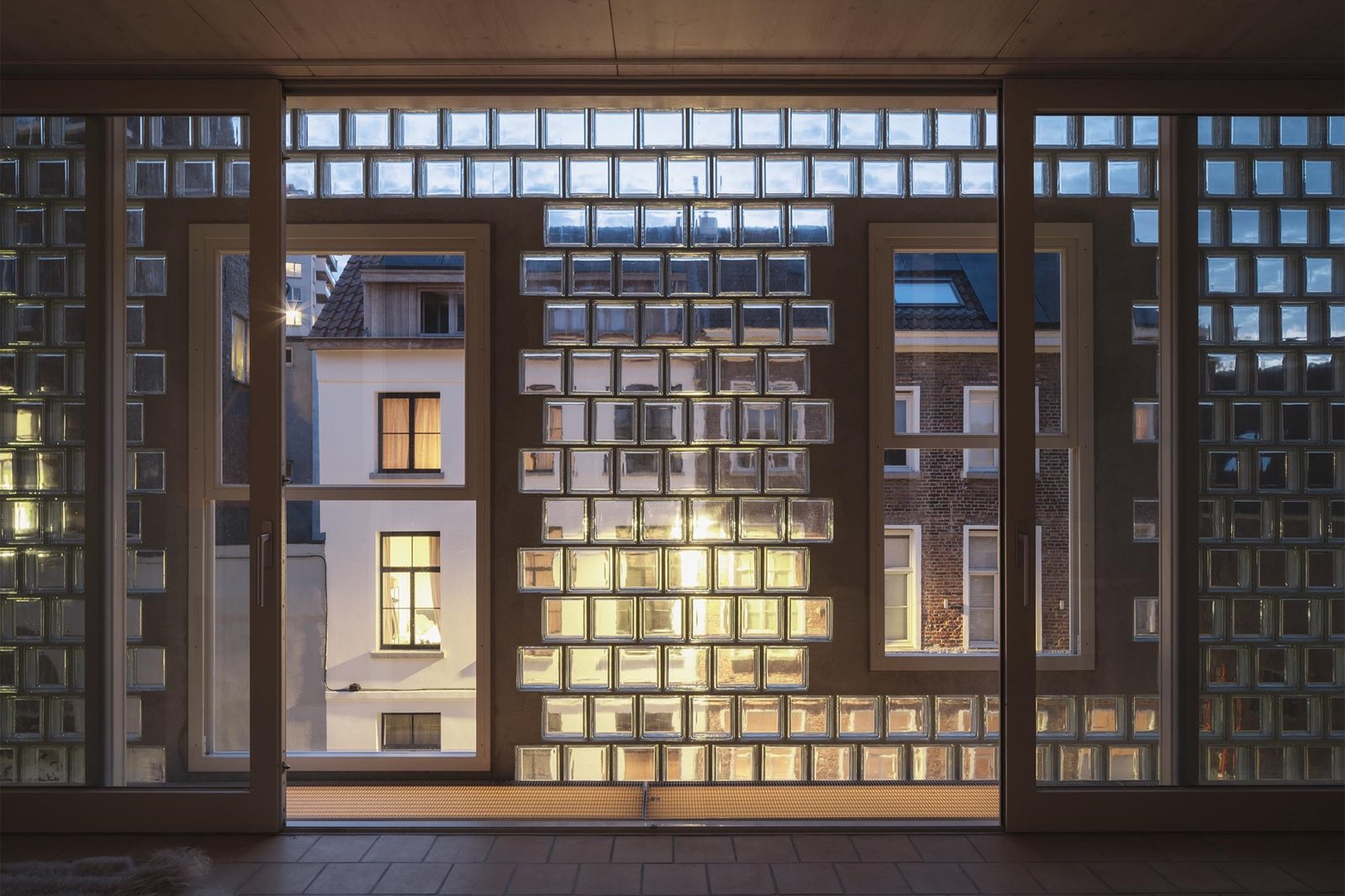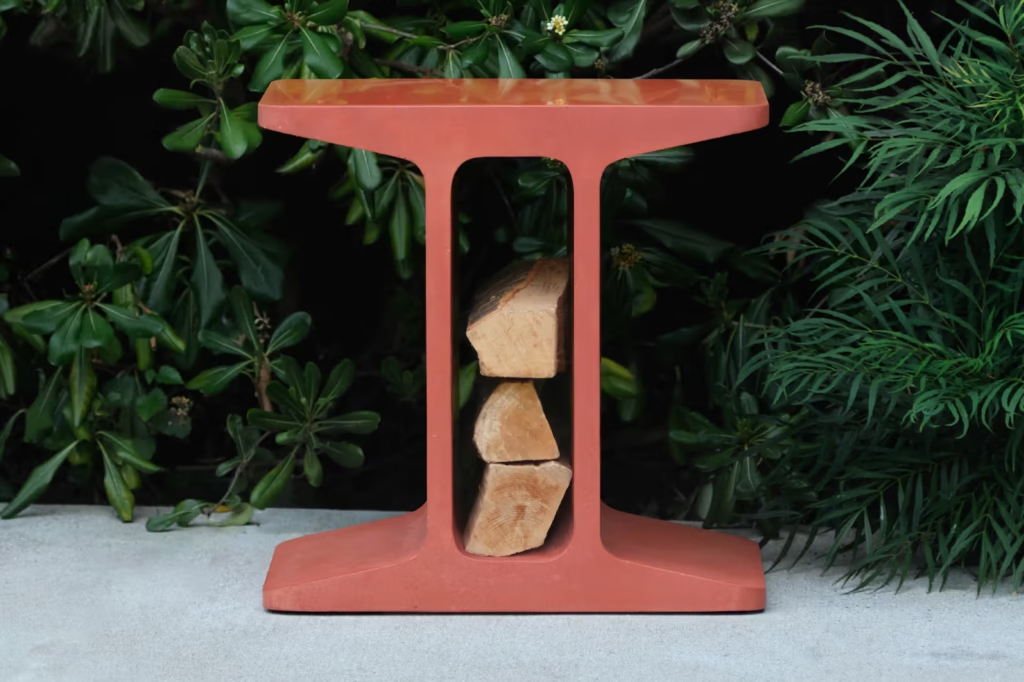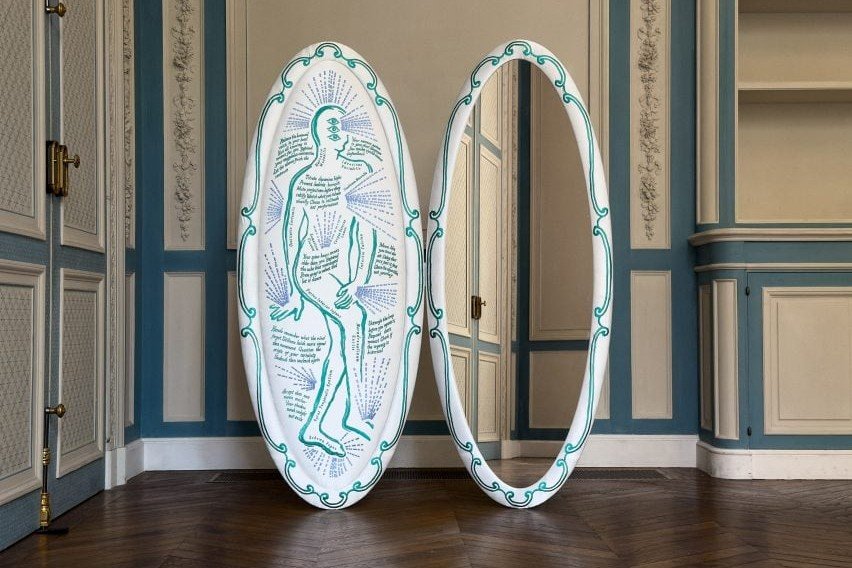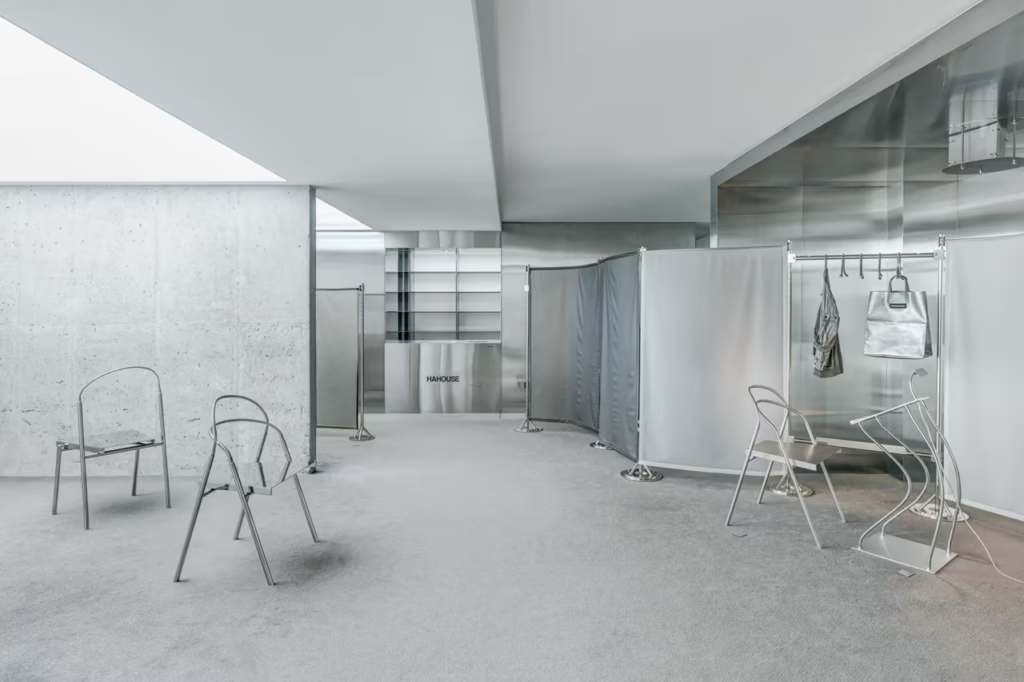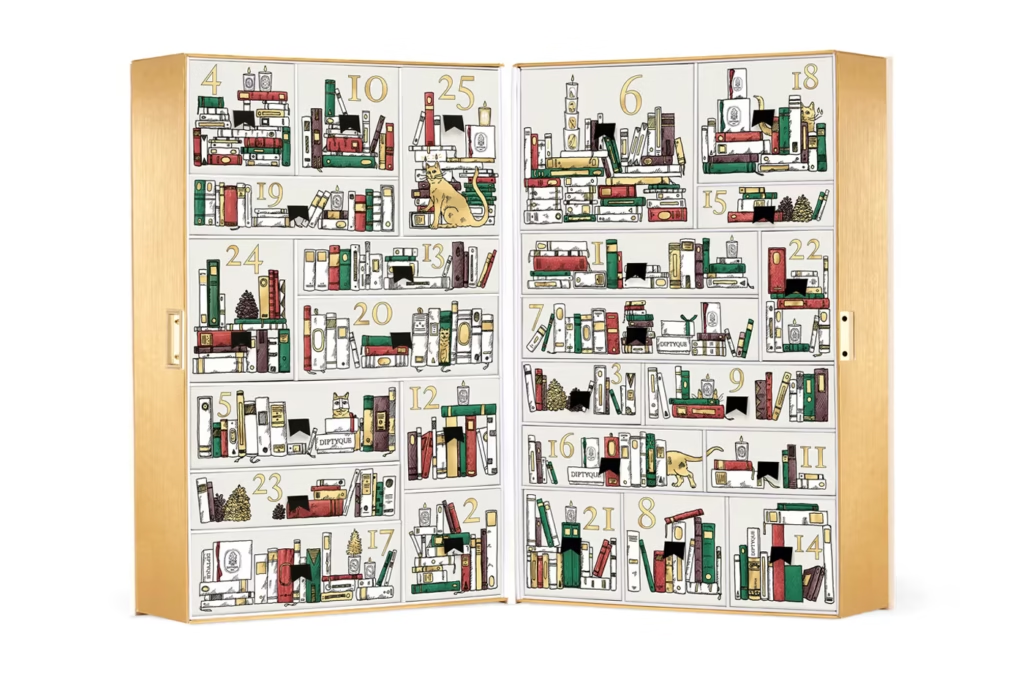Delmulle Delmulle Architecten flips the script on traditional layouts with a vertically stacked home in the heart of Amsterdam.
AN “INVERTED” APPROACH TO SPACE
Tucked into a compact plot in Waterwijk, Amsterdam, Belgian architecture studio Delmulle Delmulle Architecten has created something quietly radical. Their Glass Brick House reimagines urban living by flipping the conventional home layout upside down — placing bedrooms on the lower levels and reserving the top floor for light-filled living spaces.
This inverted design makes the most of its tight footprint and brings in more natural light where it’s needed most.
DOUBLE FAÇADE, DOUBLE FUNCTION
One of the home’s most striking features is its double façade. The base is wrapped in terracotta tiles, grounding the structure in warmth and tradition. As the eye travels upward, the material shifts to translucent glass bricks — an unexpected but beautifully functional choice.
These glass bricks, paired with full-height windows behind them, allow for soft daylight to flood the interiors while maintaining privacy and thermal comfort. The result is a house that feels both open and protected, historic and futuristic.
MATERIALS THAT SPEAK QUIETLY
Inside, the house is made almost entirely from cross-laminated timber (CLT), stained white for a clean, minimal look. Paired with terracotta flooring, the interiors feel grounded yet airy — a reflection of the exterior’s balance between solidity and lightness.
Architectural details, like traditional window moldings and patterned brickwork, nod to a neighboring stepped-gable house from 1707, embedding the new build in the history of its surroundings.
A PRIVATE ESCAPE ABOVE IT ALL
At the very top of the home, a rooftop terrace offers a serene outdoor escape — a luxury in such a dense urban setting. It’s a final touch that reinforces the house’s commitment to vertical living, where clever design turns spatial limitations into moments of calm and clarity.
This is more than just a beautiful home — it’s a smart, sustainable response to the challenges of building in tight, historic urban neighborhoods.


